There is that moment, once a year, when the garden has been harvested and every spare shelf and basket is brimming with bounty. It’s a moment worth capturing, and today I’d like to do that with you.
In addition to sharing our vegetable harvest in a video tour, I’d like to also share a few details on our recent pork smoking, plus a delicious soup recipe. Because we can’t very well smoke some homegrown pork and not make ham and bean soup!
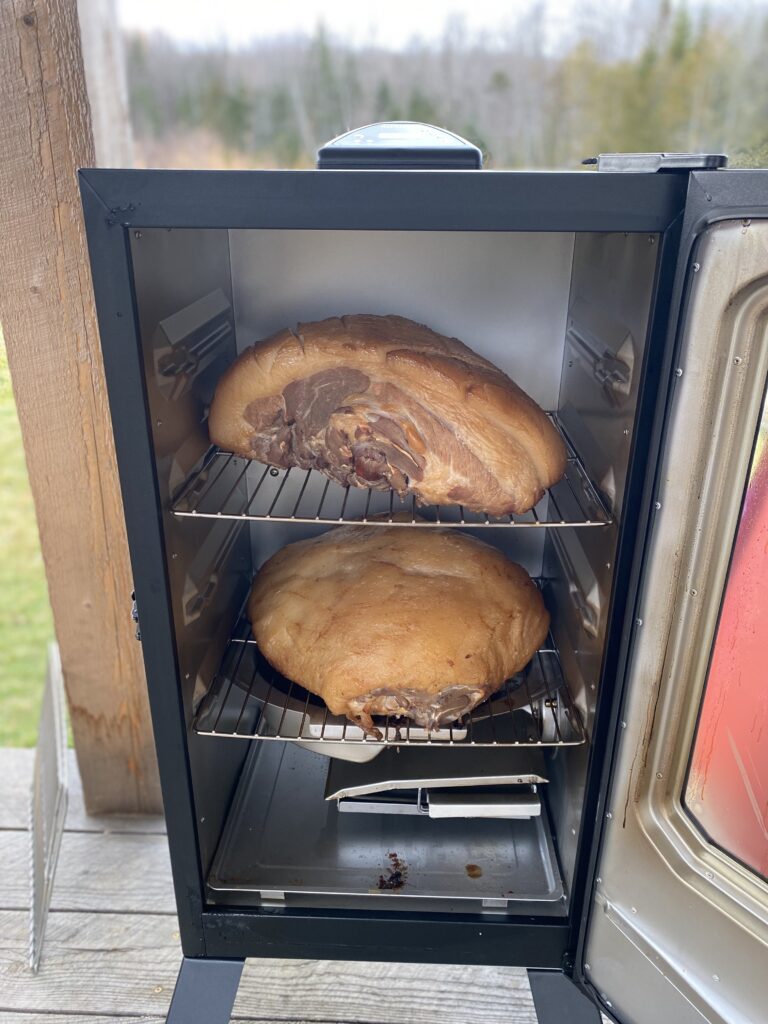
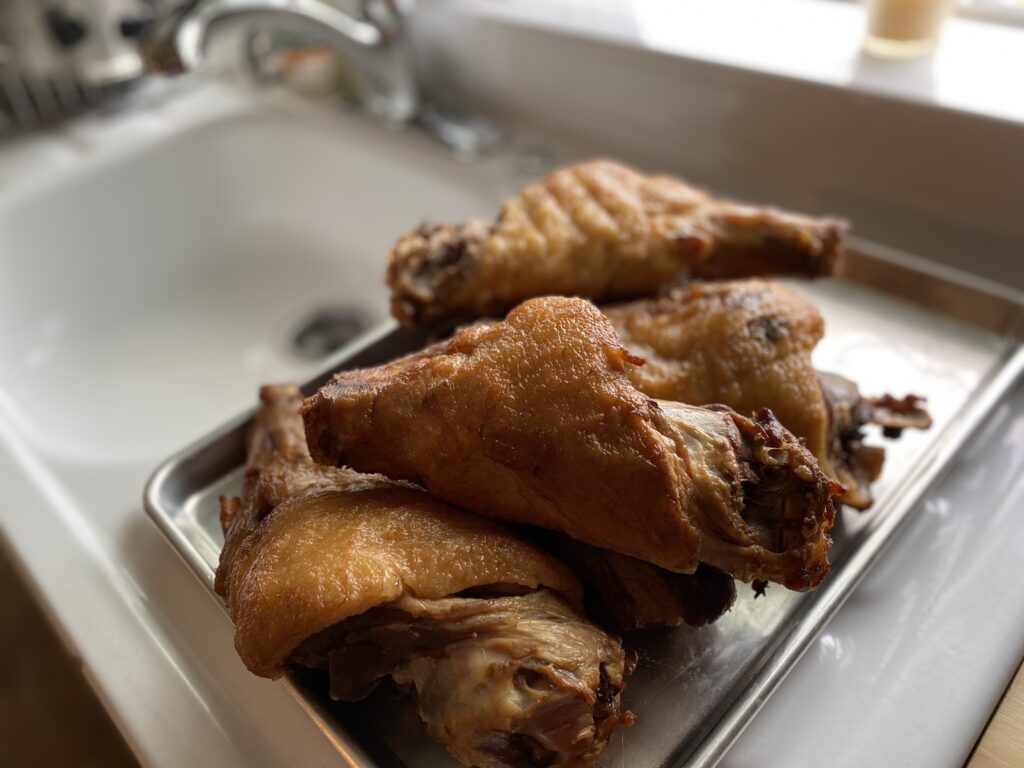
Smoked Ham & Ham Hocks
Brine Recipe
We multiplied this x5 for the amount of meat we brined and smoked.
Per 5 lbs of pork:
- 3 quarts water
1 cup good quality salt (non-iodized)
2 cups brown sugar (you could use maple sugar or syrup, I didn’t want to chance that precious commodity on our first attempt)
1/4 tsp ground clove
1/4 cup molasses
Instructions
- In a large saucepan heat 1 quart of water with other ingredients, stir and heat until sugar and salt are dissolved. Remove from heat and add remaining 2 quarts of cool water.
- Place meat in a container that has a lid. Can be a pot, a food great bucket. Something like that. The snugger the fit the better, as you don’t want the meat to float above the brine. You can always add weight to the container to keep meat submerged, but it’s nice not to have to. You also want the brine to fully cover the meat, so don’t go too big on the container. Make extra brine if needed.
- Pour brine over the meat. If meat floats, add some kind of weight. In one of our buckets the meat was not snug enough and needed a weight. I placed large fermentation weights (the kind you put in a big crock) in a ziplock bag and placed it on top of a glass pie plate on top of the meat. It worked great.
- Refrigerate for 7 days.
- Remove from brine and rinse well in cold water. Pat dry. Place on racks in the refrigerator for 24 hours to dry.
- Smoke according to your available method. We used an electric smoker, which we ran at 225º until internal temp was 150-160. We used maple for the wood chips.
We opted to cut the hams into ham steaks for quick and easy meals. We tested it out by cooking some steaks on medium low in butter and a drizzle of maple syrup, just to warm them through and caramelize the butter and syrup. Oh my word so good. We vacuum sealed everything for longterm freezer storage.
We ended up with:
- dozens of ham steaks
- eight ham hocks
- meaty ham bones
- scraps of smoked fat to be used for baked beans
- bits and scraps for the animals
Now to do all the bacon and remaining hams!
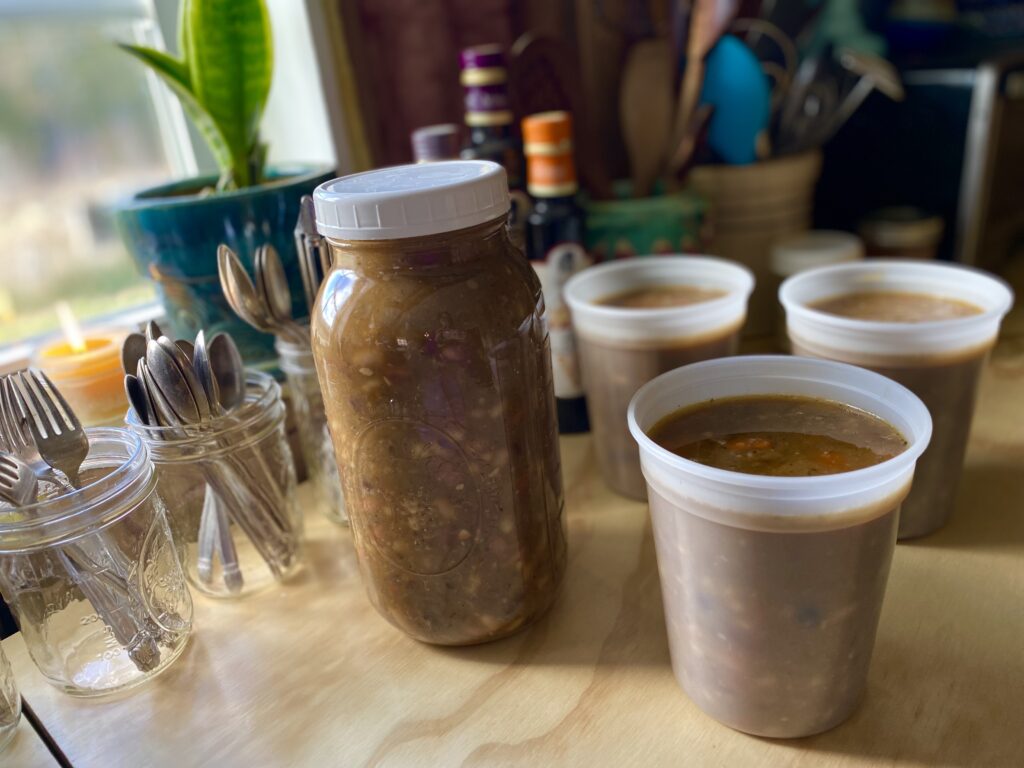
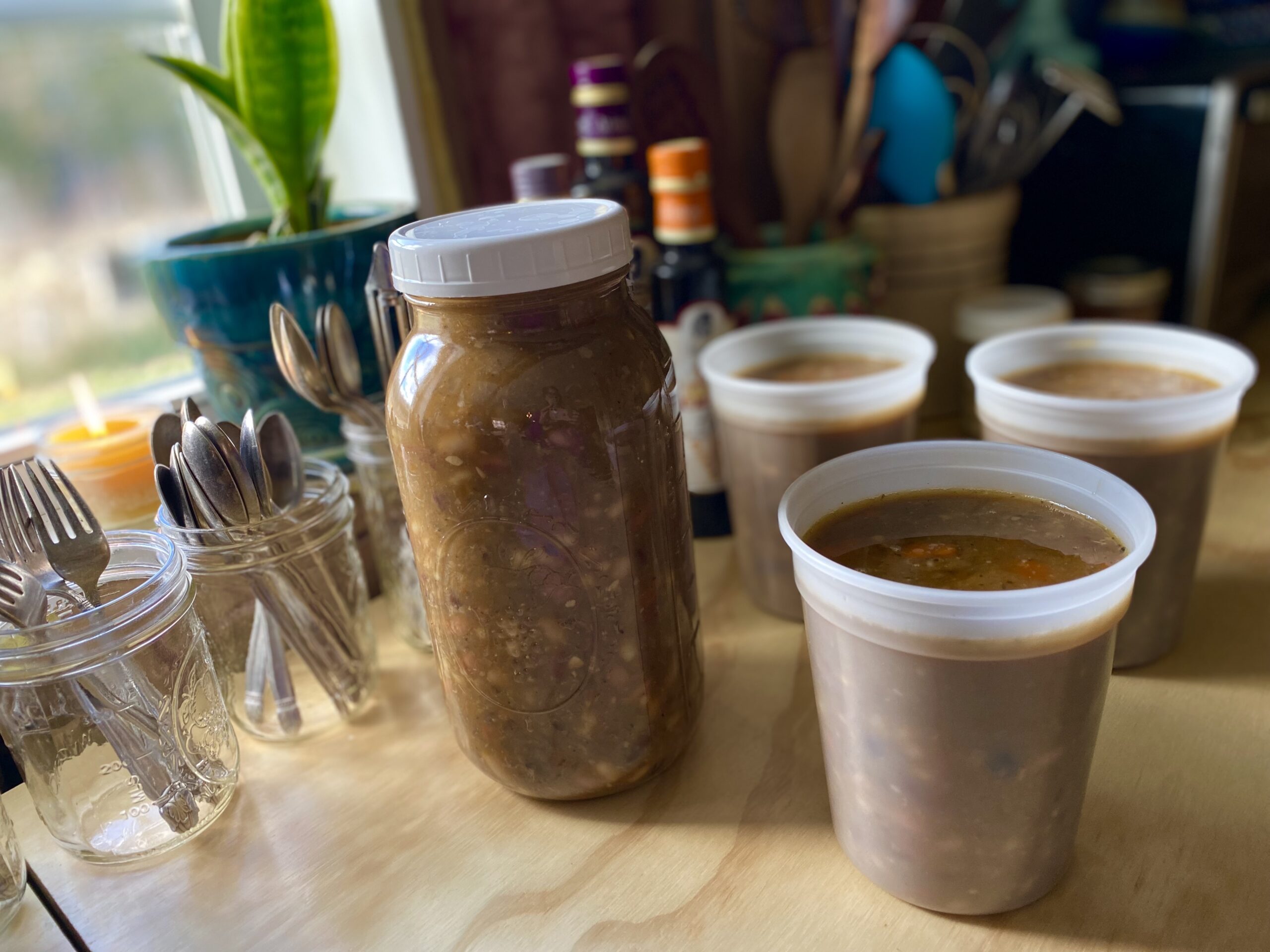
Ham & Bean Soup
Ingredients
- 2 cups dried soup bean mix Bob’s Red Mill has a nice one
- 2 lb smoked ham hock or meaty ham bone
- 2 tbsp olive oil
- 3 large carrots sliced
- 2 stalks celery chopped
- 1 large onion chopped
- 4 cloves garlic minced (or more)
- 1 bay leaf
- 1 tsp granulated garlic
- 1/2 tsp Italian seasoning
- 1/2 tsp paprika
- 1/2 tsp cumin
- 1/4 tsp ground rosemary
- 1 tsp salt
- 1/2 tsp pepper
- 8-12 cups broth
Method
- Soak the beans overnight in cold water, covered by one inch. The next day, rinse and drain.
- In your favorite soup pot, sauté onion, carrots, and celery in olive oil for a few minutes, just to begin softening them.
- Add fresh garlic and all the spices. Cook for another minute. Slowly add 1 cup of broth to deglaze the pan. Stir the bits up from the bottom with a wooden spoon, let the spices permeate the broth.
- Add the beans, hock, and remaining 7 cups of broth.
- Bring to a boil, then turn heat down to simmer, and cover. Cook slowly on a gentle simmer until beans are tender and meat falls off the bone. About two hours or so, but really you can let this go all day. The longer the better.
- Once beans are tender and meat is falling from the bone, carefully remove bones and meat from the pot. Place in a heat proof bowl to cool enough to handle.
- Once cool to handle, take the meat off the bone and chop into small pieces. This soup is about making the meat stretch. You’re after flavor throughout, not big chunks of meat.
- Return the meat to the pot, check seasoning, and enjoy!
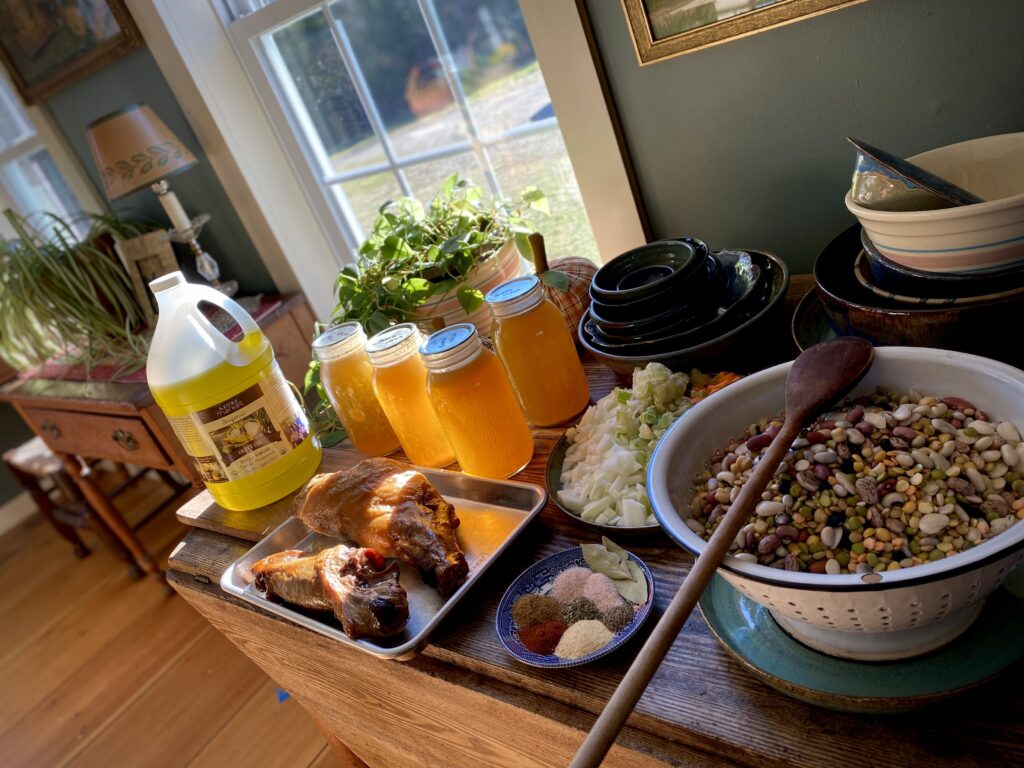
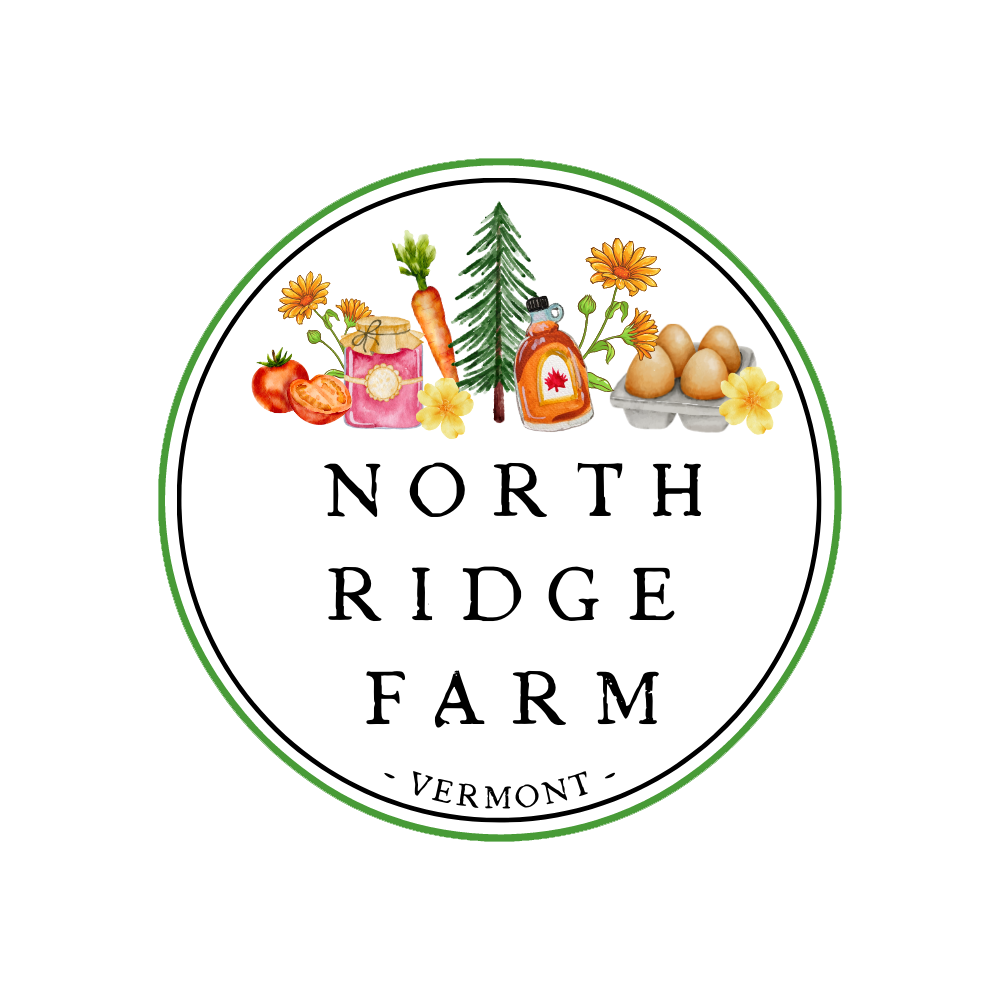
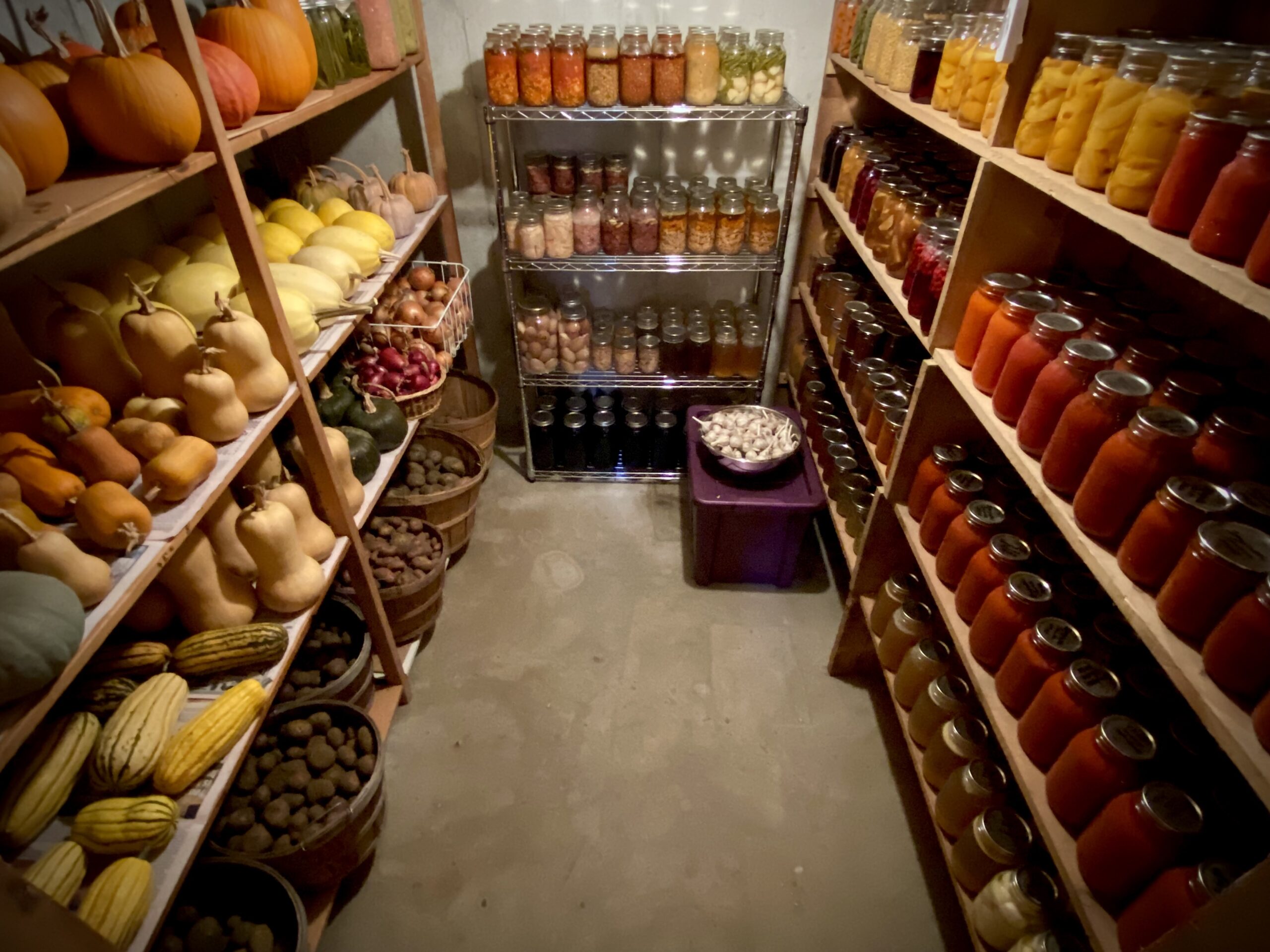
2 Responses
What kind of broth would work in this soup? Of course, I’m sure a pork broth is perfect, but could chicken or vegetable broth be used too? Thanks for sharing this wonderful recipe!
Chicken or vegetable would be perfectly acceptable. My preference is for chicken over vegetable, just has more flavor.